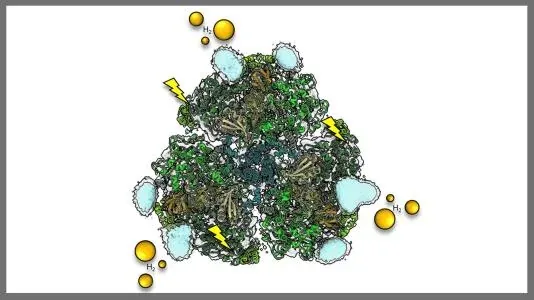
How Canada’s Innovative Prison Needle Exchange Programs are Saving Lives and Money!
2024-12-16
Author: Noah
Recent research has unveiled a shocking statistic that highlights the immense value of Canada’s Prison Needle Exchange Programs (PNEPs): for every dollar invested in these life-saving initiatives, there's a staggering return of $2 in healthcare savings linked to treating hepatitis C and other injection-related infections. This finding bolsters calls for the expansion of PNEPs across all 43 federal prisons in Canada, according to a study published in the Canadian Medical Association Journal.
The Economic Case for Expansion
The study's authors crafted a model to evaluate and forecast the costs associated with treating hepatitis C and injection-related infections under varying PNEP scenarios from 2018 to 2030. The scenarios examined included a lack of PNEPs, a status quo approach (where PNEPs are implemented in the timeline from 2018 to 2022), and an expansive rollout of PNEPs aiming for coverage of 50% of injecting-drug users by 2030.
In 2019, PNEPs were operational in just 9 out of 43 federal prisons, servicing approximately 10% of the injecting-drug users by 2022. All incoming inmates are evaluated by a registered nurse to determine eligibility for these programs, which are designed to provide sterile injection equipment, thereby reducing the risk of transmitting infectious diseases.
A Rare Global Practice
Canada is one of only nine countries worldwide that have established needle exchange programs in at least one prison. The World Health Organization aims to significantly reduce new hepatitis C infections and has called for the provision of an adequate amount of needles and syringes to injecting-drug users annually. As it stands, Canada's PNEPs represent a crucial strategy in achieving these health objectives while still being comparatively rare on a global scale.
Measurable Outcomes
The analysis revealed that without the PNEPs, an estimated $450,000 would be spent on treating infections, potentially leading to 37 hepatitis C infections that could have been prevented. On the other hand, expanding PNEPs to cover half of the injecting-drug user population could avert 224 cases of hepatitis C and significantly reduce the burden of injection-related infections, showing a compelling benefit-cost ratio of 2.0 for the expansion scenario alone.
Researchers have acknowledged that an increased prevalence of drug use and longer sentences among inmates could yield even greater economic benefits from PNEPs, indicating the need for tailored approaches to specific prison populations.
A Call for Action
Alongside the compelling financial analysis, experts highlight the severe health risks prisoners face due to substance use disorders, with up to one-third of inmates admitting to drug use in the six months leading to their incarceration. Commentators from Simon Fraser University have emphasized that without a systematic expansion of PNEPs and similar health programs, incarcerated individuals will continue to face disproportionate risks of adverse health outcomes and mortality associated with substance use.
The conclusion is clear: expanding PNEPs is not only a necessary public health intervention, but it's also an economic imperative, yielding significant healthcare savings while safeguarding the health of our incarcerated population. The urgent call for further investment in these programs could not only save lives but also reduce the long-term costs to the public healthcare system.
Will the Government Step Up?
As Canada grapples with the epidemic of substance use in its prisons, the question remains: will decision-makers take the vital step in expanding needle exchange programs to protect the vulnerable and enhance public health? The stakes are high, and the time for action is now!









 Brasil (PT)
Brasil (PT)
 Canada (EN)
Canada (EN)
 Chile (ES)
Chile (ES)
 España (ES)
España (ES)
 France (FR)
France (FR)
 Hong Kong (EN)
Hong Kong (EN)
 Italia (IT)
Italia (IT)
 日本 (JA)
日本 (JA)
 Magyarország (HU)
Magyarország (HU)
 Norge (NO)
Norge (NO)
 Polska (PL)
Polska (PL)
 Schweiz (DE)
Schweiz (DE)
 Singapore (EN)
Singapore (EN)
 Sverige (SV)
Sverige (SV)
 Suomi (FI)
Suomi (FI)
 Türkiye (TR)
Türkiye (TR)